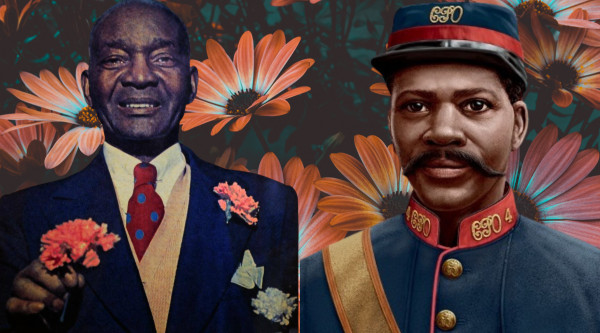Components of the plan are currently being deliberated by a federal advisory council. As the director of health policy and evaluation for Black Health Alliance and an engaged citizen, I felt it was important to attend and contribute to this discussion.
During the question-and-answer session, I referred to a slide in the presentation that noted several groups that are most impacted by gaps in drug coverage, including women, Indigenous communities, racialized communities, and those of lower socioeconomic or health status. I asked why the panel, which was composed mostly of middle-aged white men, did not reflect these communities.
I was taken aback by the response I received from one of the panellists. Dr. Gordon Guyatt, a renowned professor and physician at McMaster University, said: “I’m grateful to be up here instead of an Indigenous woman.” A smattering of laughter ensued from the predominantly white audience. When asked to clarify what he meant, Guyatt attempted to deflect the impact of his statement by claiming it was a “poor joke.” It may be hard to believe this actually happened, but you can view a recording of the exchange here.
This may seem like a one-off incident without larger implications, but the consistent exclusion of equity-seeking groups is a recurring problem throughout our health care system with serious socioeconomic and health consequences. In what is supposed to be a universal system, issues such as poverty, poor health outcomes, chronic disease, and substandard medical care continue to disproportionately affect vulnerable members of society. Their absence from these important discussions almost always means they are the ones most burdened by gaps in health policy, including a lack of pharmaceutical drug coverage.
As a former long-term care nurse, I’ve seen the impact that not being able to afford medication has on older patients. Patients may be forced to wait up to two weeks to fill prescriptions, for example, due to uncoordinated communication between health providers and a lack of pharmaceutical drug coverage. This can lead to worsening medical symptoms, such as compromised wound healing or poorly managed pain. At times, patients have to purchase less expensive treatment that may not work as effectively. One Canadian study found that in 2014, 8.3 percent of Canadians aged 55 years and older reported not taking medicines as prescribed because of cost. Plus, inappropriate prescribing of psychotropic medication can particularly be an issue for older women from a lower socioeconomic status. This was barely mentioned at the panel discussion I attended.
It is especially concerning that the Canadian Labour Congress would host an all-male panel (also referred to as a “manel”) when women are so impacted by a lack of drug insurance. A report published by the Wellesley Institute in 2015 indicated that women have less access to employer-provided health and drug insurance than their male counterparts. A study from the BC Centre of Excellence for Women’s Health found that the use of psychiatric medications and painkillers tends to be greater among women and girls than men and boys.
Indigenous voices were also absent from the panel, despite the urgency of improving health outcomes for their communities. Some of the major health concerns among Indigenous communities include poorly managed infectious and chronic disease, maternal and infant morbidity, substance abuse, and untreated mental health issues. Currently, most pharmaceutical drugs for registered First Nations and recognized Inuit patients are covered under the Non-Insured Health Benefit (NIHB) program. However, Dr. Michael Kirlew, a physician who practises in the Sioux Lookout region, says First Nations patients are subjected to gaps in coverage, delays in filling prescriptions, and discrimination. This grim reality underscores the importance of hearing Indigenous perspectives during health care discussions.
Racial and ethnic minorities face similar barriers to access when navigating the health care system. One study suggests that racialized health inequities result from “unequal treatment by health care providers, or through effects of race-related socioeconomic inequalities.” According to a 2011 cross-country comparison of Canada and the United States, black patients demonstrate poorer health outcomes and treatment success than their white counterparts due to affordability and implicit bias among practitioners. This has resulted in substandard medical decision-making and inadequate health teaching.
Mainstream health programs and policies may be designed with ambitions of being inclusive, but they consistently fall short. It is imperative that policy-makers collaborate with and provide funds to civic health organizations, such as National Collaborating Centre for Aboriginal Health, to develop targeted community outreach strategies. This would include working with elders, First Nations chiefs, Indigenous academics, and/or health care professionals to organize town hall panels specifically for and in their communities. This would help ensure that no one is left behind in the roll-out of this historic national drug coverage plan.
Hassan Yussuff, president of the Canadian Labour Congress, explained that panellists at the Hamilton town hall were chosen based on “expertise.” But it defies belief that there were no health experts from the above-mentioned groups who could have successfully contributed to the panel that evening. Organizations like Black Health Alliance, Black Physicians Association of Ontario, Indigenous Physicians of Canada Association, and National Council of Women of Canada, to name just a few, have a shared mandate of influencing policy decisions and are doing the work to improve the health of the populations they serve.
If Canada’s government is serious about providing health care that is universal and equitable, it needs to ensure that the voices of those with the least access in health care play an influential role in helping to shape pharmacare. This means spending money on community-specific panels, recruiting health professionals and/or academics that represent vulnerable communities, and providing the necessary resources to make information accessible to all Canadians.
Halima Al-Hatimy is an Ontario-based community health advocate with nearly a decade of immersive experience in Ontario’s healthcare system. Currently, she is the director of health policy and evaluation for the Black Health Alliance.
This article was originally published on HealthyDebate.ca

 By Halima Al-Hatimy
By Halima Al-Hatimy 








